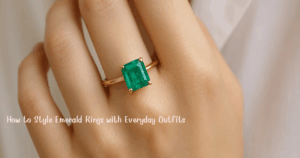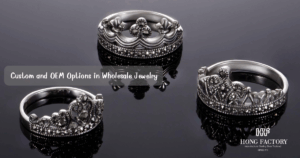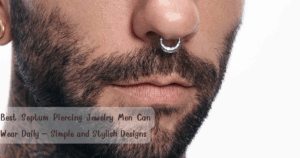Pricing is one of the most crucial decisions in the jewelry business. For wholesalers, setting the right price determines profitability, competitiveness, and long-term client relationships. Whether you sell silver, marcasite, or gemstone jewelry,
understanding how to price wholesale jewelry rings strategically can help your business thrive. This guide will walk you through the key factors that influence pricing, methods for setting profitable margins, and practical tips to ensure sustainable growth in the Wholesale Jewelry Rings market. Jewelry wholesale thai and

Understanding the Cost Structure
Before pricing any jewelry ring, wholesalers must have a clear understanding of their cost structure. Every component contributes to the final price, including materials, production, packaging, labor, and logistics. Ignoring even minor costs can reduce profit margins significantly.
Key elements to include in cost calculations:
- Raw Materials: Silver, gold plating, gemstones, and other metals or embellishments.
- Labor Costs: Skilled artisans, designers, and quality control teams.
- Manufacturing Overheads: Utilities, equipment maintenance, and factory management.
- Packaging and Branding: Boxes, pouches, and printed materials that enhance perceived value.
- Shipping and Customs: Freight, duties, and insurance for international orders.
Accurately accounting for these costs ensures your pricing covers all business operations and leaves room for profit.
The Role of Market Research
Effective pricing starts with understanding your market. Research competitors, identify your target audience, and analyze trends that influence jewelry demand. Wholesale buyers—especially retailers—seek the best balance between quality and affordability.
Questions to consider:
- What are competitors charging for similar ring designs?
- Which materials or collections are currently trending?
- What price points appeal to your target clients (boutiques, online stores, or luxury retailers)?
By studying the market, you can position your Wholesale Jewelry Rings at a competitive yet profitable level.
Setting a Profitable Wholesale Price
Once you’ve established costs and researched the market, it’s time to set your wholesale price. The key is to ensure that your price is both attractive to retailers and sustainable for your business.
A common formula used in the industry is:
Wholesale Price = (Cost of Production + Overheads) × Markup Percentage
Typical markup ranges:
- Low-end collections: 1.8× to 2.2× production cost.
- Mid-range collections: 2.3× to 3× production cost.
- Premium handcrafted jewelry: 3× to 4× or more, depending on exclusivity.
Retailers usually apply a further markup of 2× to 3× on wholesale prices, so setting the right base ensures your product remains attractive across all tiers.
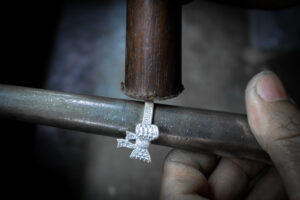
Balancing Quality and Price
While pricing influences profitability, it also reflects perceived quality. Setting prices too low might make your rings appear cheap, while excessive pricing may alienate buyers. The goal is to find a balance that communicates both value and craftsmanship.
Highlighting features such as “925 sterling silver,” “handcrafted,” or “Thai-made” adds credibility and justifies premium pricing. Brands that emphasize artisanal quality and ethical production often command higher prices in both wholesale and retail markets.
Understanding the Wholesale Jewelry Rings Market
The Wholesale Jewelry Rings market is competitive but full of opportunity. Buyers are increasingly looking for suppliers who offer high-quality, ethically made jewelry with strong visual appeal. By aligning your pricing with the value proposition of craftsmanship and reliability, you build trust and long-term loyalty with retailers.
Wholesalers from Thailand, such as Hong Factory, are a great example of how to maintain fair yet profitable pricing. Their strategy focuses on combining precision craftsmanship, premium materials, and bulk pricing efficiency—offering exceptional value to global partners.
Incorporating Branding and Perceived Value
A powerful way to support higher pricing is by enhancing perceived value. Jewelry buyers don’t just purchase products—they buy stories, emotions, and brand experiences.
Ways to increase perceived value:
- Use elegant and consistent packaging that reflects quality.
- Offer certificates of authenticity for gemstone and silver purity.
- Emphasize your brand’s heritage and commitment to craftsmanship.
- Include care cards and branded visuals for retailers to share with customers.
The stronger your brand’s narrative, the easier it is to justify premium pricing while maintaining customer satisfaction.
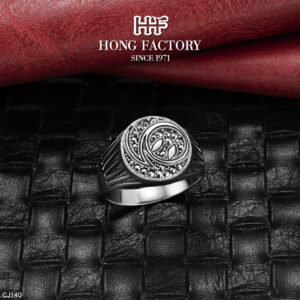
Flexible Pricing Strategies for Wholesalers
Different clients and markets may require different pricing models. Consider implementing:
- Volume Discounts: Encourage bulk purchases by offering tiered pricing (e.g., 10% off for 100+ units).
- Seasonal Promotions: Boost sales during key retail periods like holidays and trade shows.
- Exclusive Designs: Offer special collections at higher margins for premium retailers.
- Loyalty Incentives: Reward repeat customers with long-term pricing benefits.
These strategies help retain customers while protecting profitability.
Managing Currency and International Costs
When exporting jewelry internationally, fluctuations in exchange rates can affect pricing. To safeguard profits:
- Quote prices in stable currencies like USD or EUR.
- Review exchange rates periodically.
- Use long-term supplier contracts to maintain cost consistency.
Also consider regional taxes, import duties, and local retail markups when setting your base wholesale price. Transparent pricing policies foster trust and reduce misunderstandings with clients.
Monitoring Profit Margins and Performance
Pricing should never be static. Regularly review your profit margins to ensure they align with market changes. Track production costs, material prices, and competitor movements to make necessary adjustments.
Use accounting tools or spreadsheets to calculate:
- Gross Margin = (Selling Price – Cost Price) ÷ Selling Price × 100
A healthy wholesale profit margin typically falls between 25% and 50%, depending on volume and exclusivity.
Building Long-Term Relationships through Fair Pricing
Fair pricing is the foundation of successful partnerships. Retailers value suppliers who provide transparency and consistent quality. When your pricing reflects honesty and reliability, clients are more likely to commit to recurring orders and recommend your brand to others.
Offering predictable pricing structures also allows retailers to plan their own sales strategies effectively, strengthening both sides of the supply chain.
Pricing for Profit and Growth
Pricing wholesale jewelry rings requires a careful balance of cost control, market awareness, and brand positioning. It’s not just about setting numbers—it’s about defining value. Wholesalers who understand their true costs, maintain strong craftsmanship, and communicate their brand story can confidently price their jewelry for long-term profit.
In the end, the right price reflects more than a number—it represents your brand’s promise of quality, trust, and artistry. By mastering pricing strategy, you don’t just sell rings—you build a sustainable jewelry business that shines in the global market.

